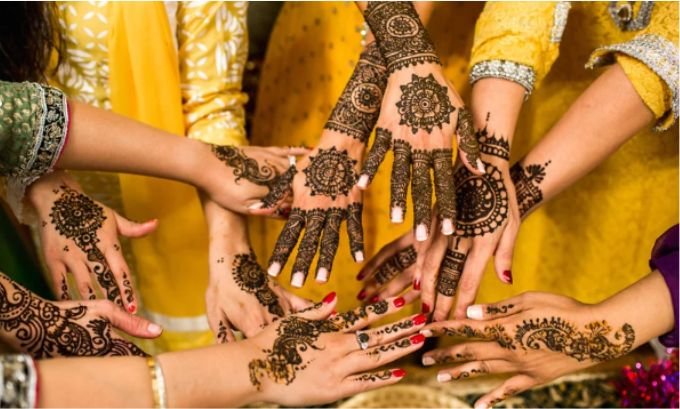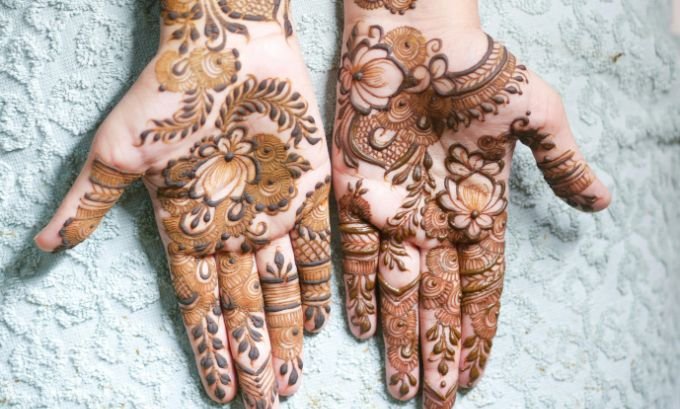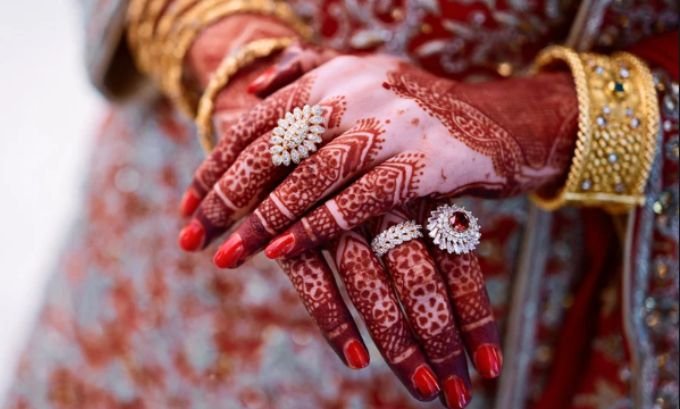The intricate patterns adorning hands and feet during Indian celebrations tell a story that spans millennia. While no single person “invented” mehndi in India, this beloved art form evolved through centuries of cultural exchange, migration, and artistic innovation across the Indian subcontinent.
Mehndi, derived from the Sanskrit word “mendhikā,” represents one of humanity’s oldest forms of body art. Archaeological evidence suggests that henna cultivation and application began around 9,000 years ago, but its journey to India involved multiple civilizations and trade routes that transformed a simple plant into a sacred tradition.
Table of Contents
The Ancient Origins of Henna Art
The henna plant (Lawsonia inermis) likely originated in North Africa and the Middle East. Ancient Egyptians used henna to dye hair, nails, and skin as early as 3400 BCE. Cleopatra herself was said to use henna to beautify her hands and feet.
However, the transformation of simple henna application into the elaborate mehndi designs we recognize today happened gradually across different regions, with India playing a crucial role in its artistic evolution.
How Mehndi Reached the Indian Subcontinent
| Period | Region | Key Development |
|---|---|---|
| 1200-1500 CE | Northern India | Mughal influence introduces Persian patterns |
| 800-1200 CE | Western India | Trade routes bring Middle Eastern techniques |
| 1500-1800 CE | Rajasthan & Gujarat | Regional styles develop distinct motifs |
| 1800-present | Pan-India | Modern fusion of traditional and contemporary designs |

The Mughal Influence on Indian Mehndi
The Mughal Empire significantly shaped mehndi as we know it today. When Mughal rulers established their courts in India during the 12th century, they brought Persian and Arabic artistic traditions that blended with existing Indian practices.
Mughal women, particularly in the royal courts, elevated mehndi from a simple cosmetic practice to an elaborate art form. They introduced:
Intricate geometric patterns inspired by Islamic art
Floral motifs that became signature elements of Indian mehndi
Bridal mehndi traditions that remain central to Indian weddings
The Mughal princess Mumtaz Mahal, for whom the Taj Mahal was built, was known for her elaborate mehndi designs, helping popularize the art among nobility.
Regional Evolution and Cultural Adaptation
Different regions of India developed their own mehndi styles:
Rajasthani mehndi features bold patterns with geometric shapes and mirror work influences. This style often incorporates peacocks, elephants, and architectural elements.
Arabic mehndi (popular in India) emphasizes flowing patterns with plenty of negative space, making it quicker to apply and ideal for modern lifestyles.
Gujarati mehndi blends traditional motifs with contemporary designs, often featuring intricate mandala patterns.
South Indian mehndi tends to be more minimalist, with emphasis on fingertip designs and simple patterns that complement the region’s traditional jewelry.

The Sacred and Symbolic Aspects
Beyond artistic expression, mehndi in India carries deep spiritual significance. Hindu traditions associate mehndi with:
- Fertility and prosperity in marriage ceremonies
- Protection from evil through sacred geometric patterns
- Connection to nature through plant-based beautification
- Celebration of femininity across life’s important milestones
These meanings weren’t imposed by a single inventor but developed organically as communities embraced and adapted the practice.
Frequently Asked Questions
Who first brought mehndi to India?
While traders and travelers likely introduced henna to India centuries ago, the Mughals significantly influenced the artistic development of mehndi patterns we see today.
Is mehndi originally Indian?
No, henna originated in North Africa and the Middle East. However, India developed unique artistic styles and cultural traditions around mehndi that are distinctly Indian.
Which Indian state is famous for mehndi?
Rajasthan and Gujarat are particularly renowned for their elaborate mehndi traditions, though the practice is popular throughout India.
When did mehndi become popular in Indian weddings?
Mehndi ceremonies became integral to Indian weddings during the Mughal period (12th-18th centuries) and have remained central to marriage celebrations.
What’s the difference between henna and mehndi?
Henna refers to the plant (Lawsonia inermis) and its dye, while mehndi specifically refers to the art of applying intricate designs using henna paste.
A Living Tradition That Continues to Evolve
Rather than having a single inventor, mehndi in India represents a beautiful example of cultural fusion. Ancient practices merged with Mughal artistry, regional traditions, and contemporary innovations to create the diverse mehndi landscape we see today.
Modern mehndi artists continue this tradition of evolution, incorporating everything from Arabic calligraphy to contemporary graphics while respecting the sacred foundations laid by countless unnamed artists across centuries. The true inventors of Indian mehndi were the collective hands, hearts, and imaginations of generations who saw beauty in temporary art and meaning in ancient traditions.
Celebrate the timeless tradition of mehndi with authentic Indian products from Tokyo Mart — your trusted destination for everything from cultural essentials to festive beauty items.


